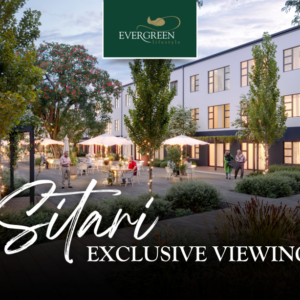
Future Trends in Retirement Living
I guess the first trend in retirement living is that people aren’t retiring anymore, at least not the way they used to! Instead many are working longer out of necessity or a desire to remain vital and engaged. Retired executives extend their contracts or become business consultants and many retirees set up small businesses or work for charity. This sense of purpose combined with advances in medical science means that we are living longer too.
Retirement living developers need to understand these shifts and continuously adjust their products and services. Let’s consider 5 important future trends and how these may impact retirement living.
1. Shift to lifestyle retirement villages
Previously seniors scaled down to smaller homes or apartments. Some moved into nursing homes while others went to live with children. Today modern lifestyle villages are a far cry from the old age home, offering physical security, discreet healthcare, financial peace of mind and superb facilities and services. This is the new benchmark in retirement living which removes the hassle of managing your own home. The lifestyles on offer in these new villages are on par or better than staying in your own home.
2. Shift to the Life Right purchase model
There has been a shift internationally towards the life right purchase model, referred to as a “right of occupation” in the USA, Australia and New Zealand. A life right (usufruct) provides the retiree with security of tenure for life. The physical property (bare dominium) however belongs to the developer, who has an incentive to keep the estate in tip top condition. Many of the improvements that would require a special levy in a sectional title village are funded by the life right developer, who also manages the estate on behalf of residents. This continuous investment by the developer avoids the risk of run down estates and steep special levies, especially when villages begin to age. In exchange for these benefits the life right holder forfeits a portion of capital growth on resale of the life right.
A second benefit of the life right model is flexible pricing. This means that life right units can be purchased at a discount in exchange for a reduced capital return. Depending on the retiree’s financial resources, this can be a huge benefit. The financially strong developer takes a long term view on returns.
3. Generational shift and the Boomers
Today’s retirees, the so-called Baby Boomers born between 1946 – 1964, have different needs and aspirations to the previous generation. Boomers changed the world of work dramatically and are now reshaping retirement and retirement living. In retirement village terms they are looking for beautiful spaces, convenience, work-from-home opportunities, technology in the home, access to gyms and heated swimming pools, independence and flexibility. And while Boomers don’t like to talk about it, they want discreet healthcare options should the need arise. They also appreciate flexible purchase models and affordable levies. Some Boomers will choose to retire at home but many will move to retirement villages that understand and cater for a modern retirement lifestyle.
4. Technology and Smart Homes
Few retirement village developers are paying attention to design and the advantages of technology. They simply offer conventional residential stock with some communal facilities and call it a retirement village. This will not do for Boomers! Design must allow residents to age-in-place-in-time. This means offering stylish modern homes to young retirees that can be easily retrofitted to cater for ageing residents. Villages should have a fibre optic backbone to ensure high speed internet access, work-from-home options and access to technology to extend independence when age eventually catches up.
5. The importance of scale
Finally, the importance of scale is often not understood by purchasers. The only way to combat future levy inflation and offer an attractive basket of services is to have between 150 – 350 units. Small villages backed by small operators will always face a challenge in meeting operating costs and levies will escalate. The only exception is boutique retirement villages for the wealthy, where higher levies are accepted in exchange for exclusivity. My advice to purchasers is to buy into villages that can scale via phased development with backing from a financially secure development company.
If you’re interested in learning more about the Life Right model, contact us below.



